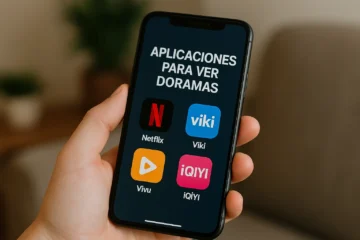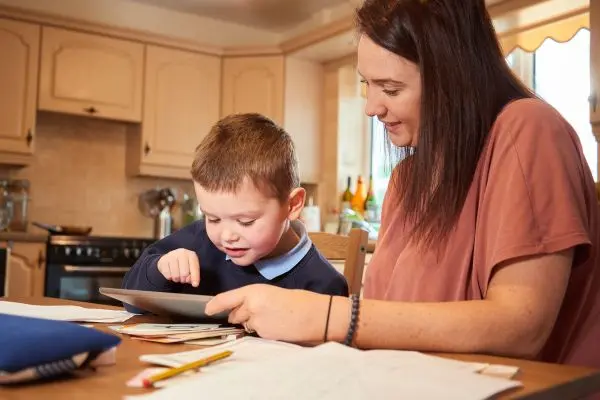How to download reading apps for kids - 6 steps
Advertisement advertisements
Discover how to download free reading apps for kids to support their learning journey with fun and interactive tools.
6 steps to download the reading app for kids
Downloading free reading apps for kids is straightforward, with most apps available on popular app stores like Google Play and the App Store.
Having these apps on your device makes it convenient for kids to practice reading wherever they are, whether at home, on a trip, or during downtime.
Here's a step-by-step guide to download the best reading apps for kids:
- Open your device's app store: Access the Google Play Store for Android or the App Store for iOS devices.
- Both stores categorize apps by function, so finding reading apps for kids is easy.
- Apps are usually labeled with "Free" or "In-app purchases," helping you choose the right one.
- Search for "reading apps for kids": Use specific keywords or search for popular app names to find top-rated free options.
- You can also explore "Educational" or "Kids" categories for additional reading apps.
- Look for apps with terms like "learn to read," "phonics," or "sight words" for targeted results.
- Check ratings and reviews: Ratings and reviews provide valuable insights into each app's quality and child-friendliness.
- Check that the app has a rating of at least 4 stars, as this generally indicates user satisfaction.
- Read through reviews to understand the app's strengths, weaknesses, and suitability for young users.
- Select a free app with your preferred featuresChoose an app that matches your child's age and includes the desired educational features.
- Ensure the app aligns with your child's learning level and interests, such as phonics games or storybooks.
- Some apps may also offer customizable settings or adjustable difficulty levels.
- Click "Download" or "Get".: Start the download by tapping the button, and the app will install automatically.
- Larger apps may take a few moments, depending on your internet speed, so a stable connection is best.
- Once installed, you can find the app on your home screen or in your app drawer.
- Open the app and set up any parental controlsCustomize settings like parental controls, if available, for a safe, child-friendly experience.
- Parental controls allow you to monitor screen time, disable purchases, and control access to settings.
- Setting these controls helps ensure that kids are engaging safely with the app's content.

What are reading apps for kids?
Reading apps for kids are specially designed applications that support children in developing essential literacy skills.
They cover basics like phonics, vocabulary building, and reading comprehension through interactive activities and games that make learning feel like play.
These apps often use colorful visuals, engaging sounds, and animations to capture children's attention, making reading accessible and enjoyable.
The main purpose of reading apps is to give children a head start in literacy by making reading fun and approachable.
With activities that range from letter tracing to sentence building, kids are introduced to the basics of reading in a structured way.
Many reading apps are also adaptive, meaning they adjust to each child's pace, creating a personalized experience that supports continuous growth and confidence.
Reading apps also provide tools for parents, such as progress tracking and reporting, to help them stay informed about their child's achievements and areas for improvement.
This structure and feedback make reading apps a powerful supplement to traditional reading activities, supporting young learners at home or on the go.
Who benefits from reading apps for kids?
Reading apps are useful for a wide range of ages, providing targeted support that helps children at different stages of their literacy journey.
These apps are especially beneficial for families who want to introduce reading skills early, support school learning, or reinforce reading fundamentals.
List of Users Who Benefit:
- Preschoolers (ages 3-5)Reading apps introduce basic letter sounds and phonics in an engaging way, helping kids build foundational skills.
- KindergartenersApps reinforce what children are learning in school, such as letter recognition, phonics, and sight words.
- Early elementary students: Apps help children read simple words and sentences independently, strengthening reading confidence.
- Struggling readersFor children needing extra support, these apps provide targeted practice to reinforce essential reading skills.
- Parents seeking a structured learning toolReading apps provide an accessible, organized way for parents to support their children's learning from home.
With the adaptability of reading apps, children from various backgrounds and reading levels can benefit from consistent, interactive practice.
Parents can feel empowered knowing they're providing valuable resources that help develop early literacy skills, setting children up for lifelong learning success.
Reasons to download a reading app for kids
There are multiple benefits to downloading a reading app for kids, from engaging young learners in literacy to offering convenience and flexibility for parents.
Reading apps combine education and entertainment, providing children with a structured yet playful environment where they can practice reading skills.
These apps can be used at any time, allowing children to learn independently and develop confidence in their reading abilities.
Motivates independent learning
Reading apps encourage children to explore literacy skills on their own, building self-confidence and independence.
Kids can engage with reading material in a fun, interactive way, exploring letters, sounds, and words at their own pace.
Many reading apps use gamified elements like rewards, badges, or points, motivating kids to keep practicing without the need for constant supervision.
This independent learning model helps children feel a sense of achievement, boosting their interest in reading over time.
Reinforces school learning
Reading apps serve as a valuable supplement to what children learn in school, providing additional practice for skills like phonics, sight words, and comprehension.
Parents can use these apps to reinforce lessons from the classroom, helping children retain and deepen their understanding of reading fundamentals.
With a reading app, children have more opportunities to practice outside of school, helping them solidify important concepts in an engaging, self-paced format.
3. Offers a fun and safe environment
Reading apps are designed to be safe and user-friendly, with age-appropriate content and parental controls that provide peace of mind.
Most reputable apps are ad-free or include settings that allow parents to disable ads or in-app purchases, creating a distraction-free experience.
A secure environment ensures children can focus on learning without encountering unsuitable content, making reading apps a reliable choice for parents.
Reviews of the reading apps for kids
Reading apps for kids typically receive high praise from parents, educators, and caregivers who value their educational benefits and ease of use.
User reviews often emphasize how these apps make reading accessible and enjoyable for young children, especially those who may struggle with traditional learning methods.
Parents find that reading apps not only teach fundamental skills but also provide a structured way to track their child's progress and development over time.
Many parents highlight the simplicity of the apps' design, as well as the ability to control and monitor their child's screen time and app usage.
These positive reviews reflect the effectiveness of reading apps in making literacy fun, supportive, and easily integrated into daily routines.
Overall, reading apps are popular among families for their capacity to support early literacy skills in an engaging, structured, and measurable way.
Pros and cons of downloading a reading app for kids
While reading apps have numerous advantages, there are also a few potential drawbacks that parents should consider.
Pros:
- Engaging and interactiveApps use colorful visuals, sounds, and games to keep children interested in reading.
- Convenient and accessible: With a reading app, kids can learn anytime, whether at home, in the car, or while waiting.
- Personalized learning: Many apps adjust the content based on the child's progress, providing a tailored experience.
- Safe environment: Most apps are designed with kid-safe features, like parental controls and ad-free experiences.
- Cost-effective: Many high-quality reading apps are free, and even paid versions are often affordable.
Cons:
- Limited scope: Apps may not cover every literacy skill in depth, especially more advanced concepts.
- Screen time concerns: Excessive use of devices can lead to increased screen time, which some parents may want to manage.
- Requires device access: Children need access to a smartphone or tablet to use these apps, which may not be ideal for all families.
Understanding the pros and cons allows parents to make an informed decision about incorporating reading apps into their child's learning routine.
Is the app free or paid?
Many reading apps for kids offer free versions with core features that provide essential literacy tools and educational content.
These free versions are typically sufficient for foundational learning, including letter recognition, phonics, vocabulary, and comprehension exercises.
Some apps also offer premium versions with additional features like expanded libraries, tracking tools, or advanced lessons, which come at a monthly or annual subscription fee.
Parents can often explore these premium options through free trial periods, allowing them to assess whether the paid features offer added value before committing.
Free versions make reading apps accessible to a wide range of families, ensuring every child has the chance to benefit from early literacy resources.
Is the app available for Android and iOS?
Yes, the majority of reading apps for kids are available on both Android and iOS platforms, ensuring compatibility across devices.
These apps can be easily downloaded from the Google Play Store for Android users and the App Store for iOS users, providing flexibility for families with different types of devices.
Having the app available on both platforms means families can use the app on multiple devices, such as tablets and smartphones, making learning accessible anytime.
Whether parents prefer Android or iOS, they can find a reading app that meets their needs, ensuring kids can practice reading consistently and with ease.
Do we recommend these reading apps for kids?
Yes, reading apps for kids are highly recommended as they offer an effective, accessible, and engaging way for young learners to practice reading.
The apps combine interactive features, such as games and stories, with educational content that supports foundational literacy skills, making them an invaluable tool for children learning to read.
For families seeking a convenient way to reinforce reading skills at home, reading apps offer the perfect balance between education and entertainment.
By choosing reputable reading apps, parents can feel confident they're providing their children with safe, well-designed resources that foster a love of reading.
In conclusion, downloading a reading app for kids is an excellent way to support children's literacy in a fun and engaging manner.
These apps provide a blend of structured learning and interactive play, giving children the foundation they need for reading success.
With many high-quality options available for free, reading apps are a practical and affordable choice for families wanting to encourage early literacy and make learning accessible.





